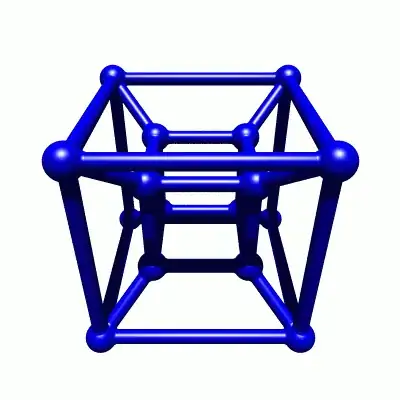I found this:
The tesseract is a four dimensional cube. It has 16 edge points $v=(a,b,c,d)$, with $a,b,c,d$ either equal to $+1$ or $-1$. Two points are connected, if their distance is $2$. Given a projection $P(x,y,z,w)=(x,y,z)$ from four dimensional space to three dimensional space, we can visualize the cube as an object in familiar space. The effect of a linear transformation like a rotation $$ R(t)=\pmatrix{1&0&0&0\\0&1&0&0&\\0&0&\cos(t)&\sin(t)\\0&0&-\sin(t)&\cos(t)} $$ in $4D$ space can be visualized in $3D$ by viewing the points $v(t) = P R(t) v$ in $\mathbb R^3$.
So how does $P$ actually look?
